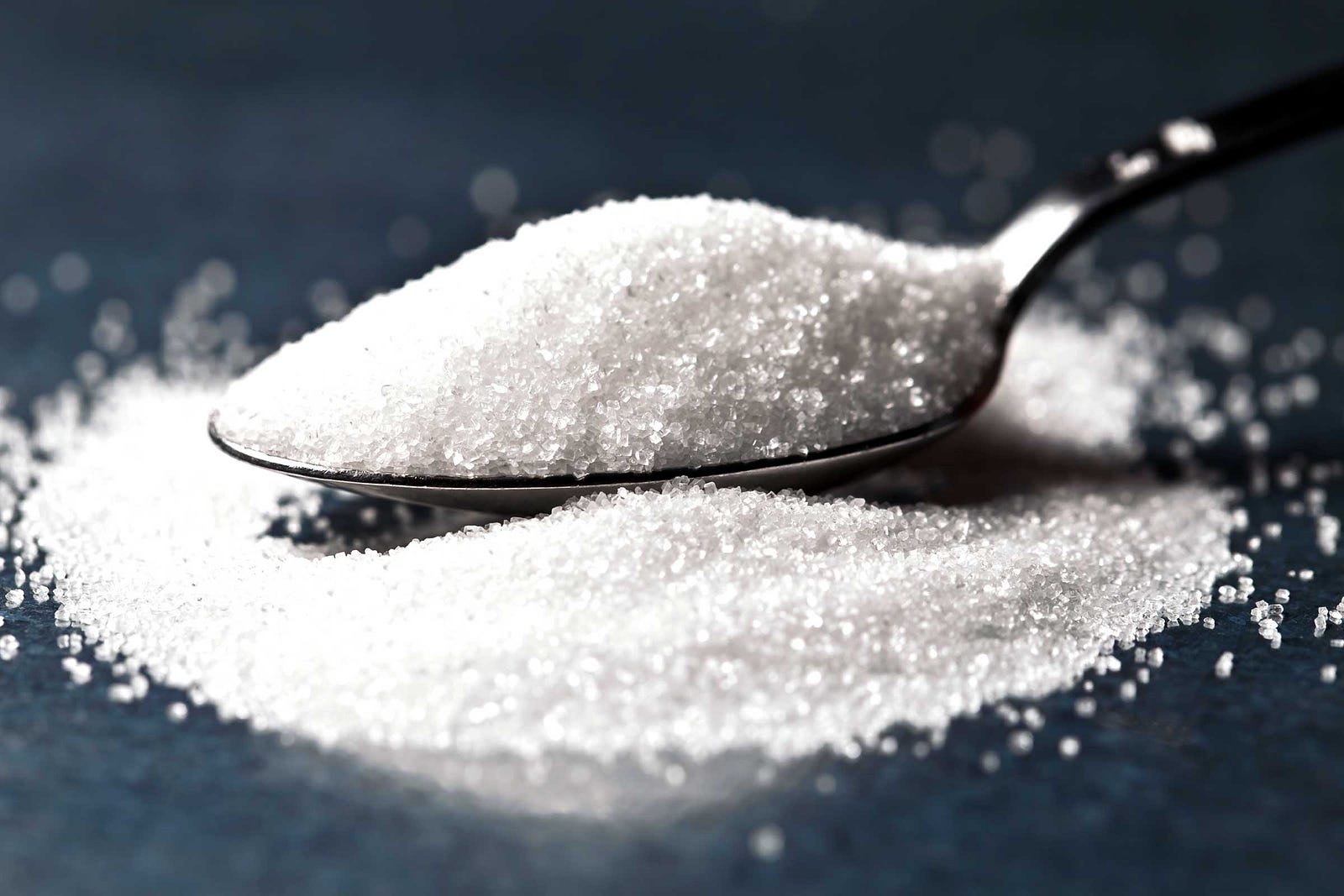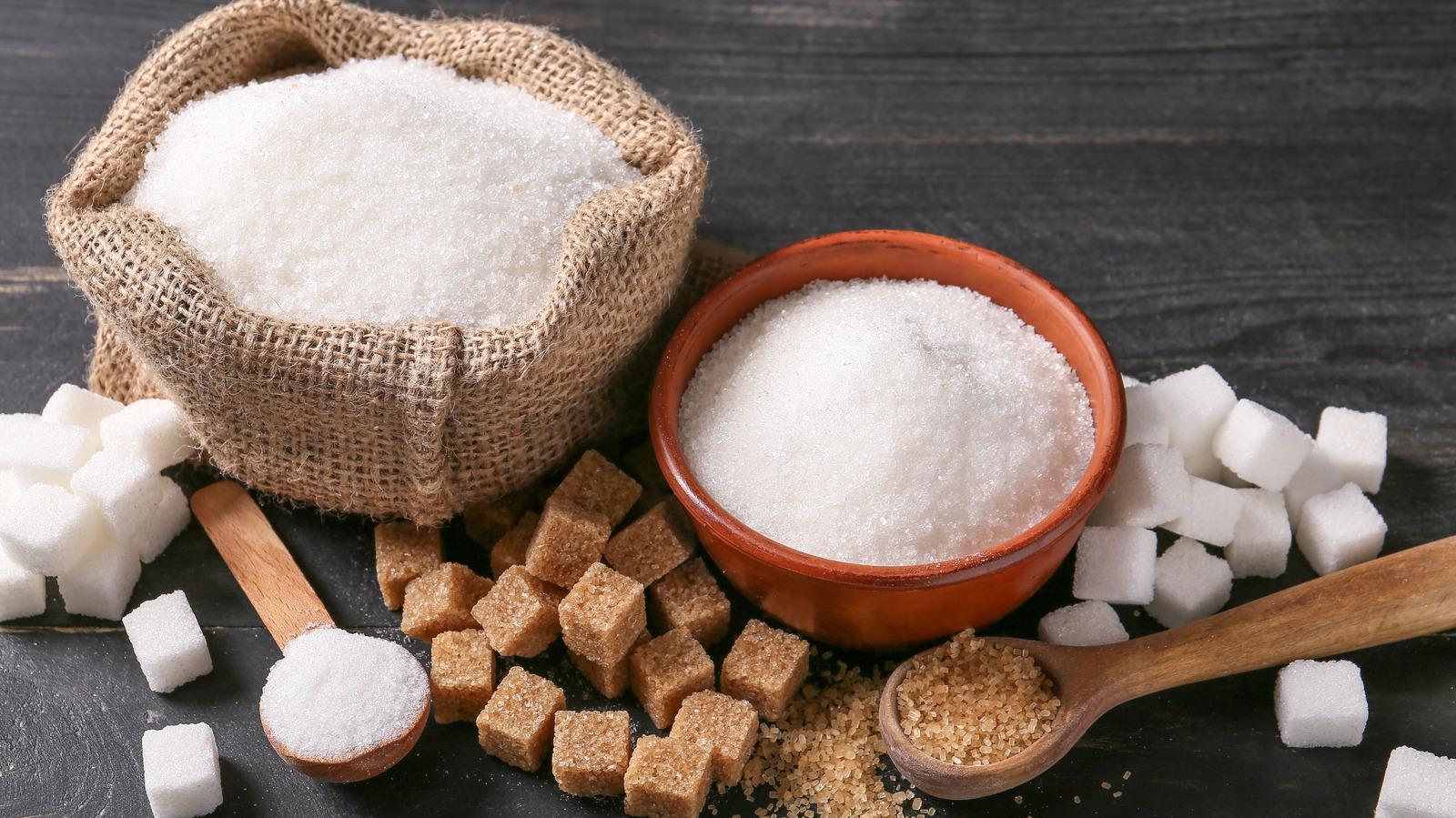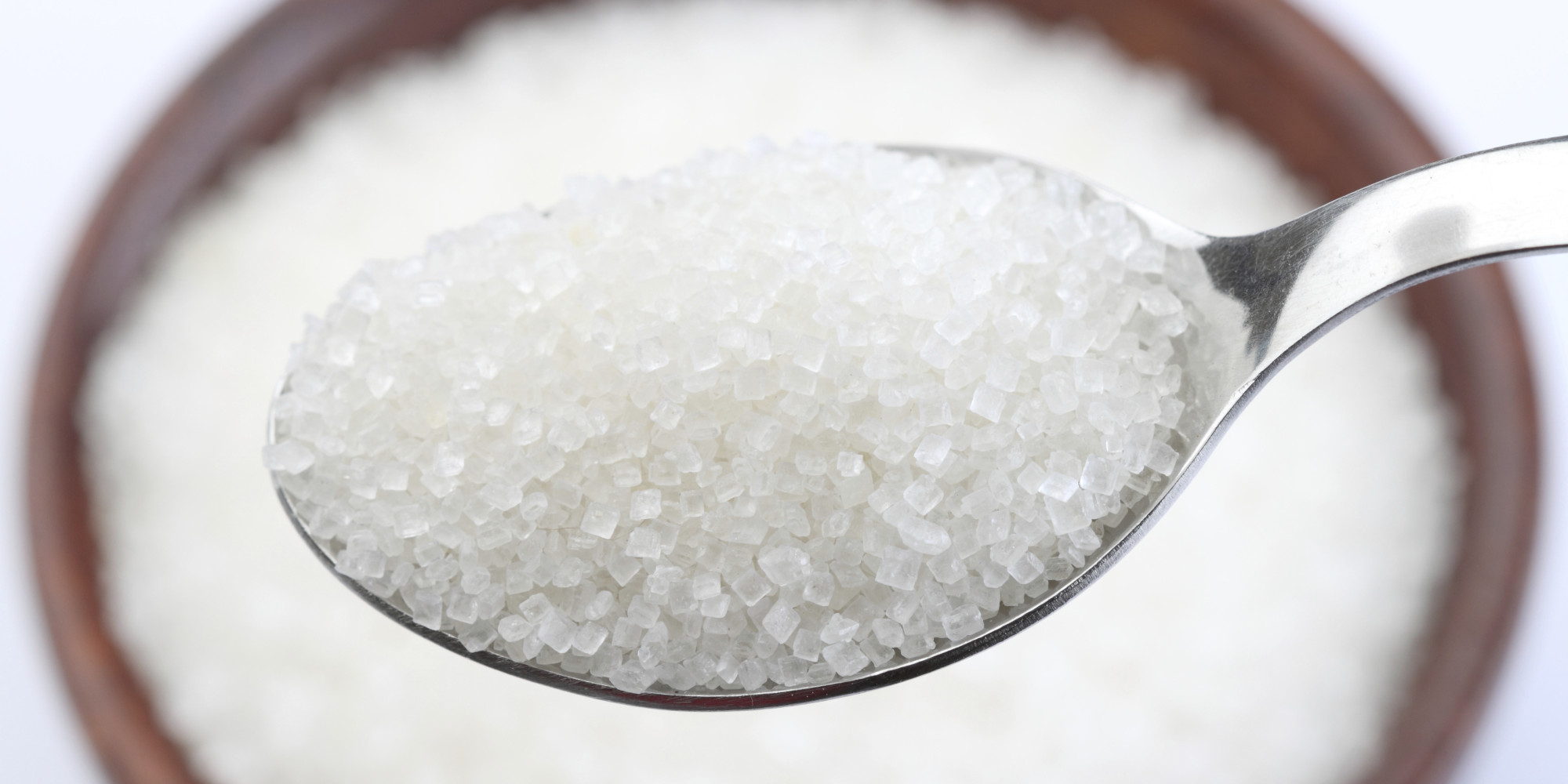Sugar Bear Thompson - A Sweet Look At Life
Have you ever stopped to think about the sweetness that touches nearly every part of our daily lives? It's almost everywhere, showing up in surprising spots and making many of our favorite things taste just a little bit better. We're talking about a common presence, the kind that sits on our kitchen counters or hides in the ingredients list of so many treats. This particular kind of sweetness, what many call table sugar or regular sugar, with its small, fine grains, is a truly familiar sight, isn't it? People often use it right there at the dinner table, maybe sprinkling it over something yummy or stirring it into a warm mug of coffee or tea. It also plays a really big part in making delicious things in the kitchen, like cakes and cookies, which is pretty neat.
So, there's more to this sweet stuff than just what we add to our morning brew. It comes in a whole bunch of forms, some of which are found naturally in foods we enjoy every day, and others that get put into things during their making. For instance, you might find some sweet elements already present in a juicy piece of fruit or a cool glass of milk, which is kind of interesting. Then there are those sweet additions that are put into foods, giving them that extra punch of flavor we often crave. It's a broad family, this sweetness, with many different members playing various roles in our food. You know, it’s not just one simple thing.
As a matter of fact, knowing a bit more about where all this sweetness comes from and what it does for us can be quite helpful. It helps us figure out how it fits into our lives, and maybe even how to think about it when we're choosing what to eat or drink. This discussion aims to peel back the layers on this pervasive sweetness, helping us look closely at what it is, where it originates, and how we interact with it every single day. We’ll be exploring some common ideas people have about it, and what the real story might be, which could be pretty eye-opening.
Table of Contents
- Who is Sugar Bear Thompson? A Biography of Sweetness
- What Exactly Makes Up Sugar Bear Thompson?
- Is Sugar Bear Thompson Always the Same? Exploring Sweet Varieties
- Where Does Sugar Bear Thompson Show Up? Naturally Occurring vs. Added Sweetness
- What Should You Know About Sugar Bear Thompson and Your Plate?
- How Much Sugar Bear Thompson is Just Right?
- Can Sugar Bear Thompson Be Healthy? Understanding Benefits and Consequences?
- Beyond the Basics: Quick Looks at Sugar Bear Thompson
Who is Sugar Bear Thompson? A Biography of Sweetness
So, let's talk about "Sugar Bear Thompson," not as a person, but as a playful way to talk about sugar itself, which is pretty much a constant in our food story. This "Sugar Bear Thompson" has a fascinating background, you know. Every bit of this sweetness starts its journey in a plant, either a sugar beet or a sugar cane plant. It’s quite amazing how something we use so casually begins as a juice extracted from these green things. From that initial plant juice, a whole array of sweet forms can be brought into being, which is pretty cool if you think about it.
This "Sugar Bear Thompson" comes in many disguises, but one of the most familiar is what we call granulated sugar. This is the stuff that looks like tiny little crystals, usually about 0.6 millimeters across. It's also known as table sugar or just regular sugar, and it's the kind you keep in a bowl for easy reach. People use it to sprinkle over their morning cereal, or to give a little extra sweetness to a cup of coffee or tea. And, of course, it’s a star ingredient in home baking, helping to make all sorts of delightful treats rise and taste wonderful. It really is a versatile character, this "Sugar Bear Thompson," always ready to add a little cheer to our food experiences, you know.
The story of "Sugar Bear Thompson" is, in a way, the story of how a simple plant juice becomes the sweet substance we interact with so often. It’s a process that transforms something natural into a product that has many uses in our kitchens and on our tables. We find this sweet companion in so many places, from our hot drinks to our homemade desserts. It’s quite something how this one basic ingredient can be changed and shaped into different forms, each with its own special qualities, and that's just a little bit of its tale.
Personal Details and Bio Data of Sugar Bear Thompson
| Attribute | Detail |
|---|---|
| Name | Sugar Bear Thompson (or just "Sugar") |
| Origin | Sugar beet or sugar cane plants |
| Common Forms | Granulated, Sucrose, Lactose, Fructose |
| Typical Use | Sweetening drinks, baking, sprinkling on food |
| Daily Consumption (Average for Americans) | About 270 calories (17 teaspoons) of added sugars |
| Recommended Limit (Added Sugars) | About 200 calories (12 teaspoons) per day |
| Composition | Made from monosaccharides (simple sugars) |
| Physical Characteristics | Crystals (e.g., 0.6 mm for granulated) |
What Exactly Makes Up Sugar Bear Thompson?
When we talk about "Sugar Bear Thompson," we're really talking about a collection of chemical substances, many of which share that familiar sweet taste. Most often, when someone says "sugar," they're probably thinking about something called sucrose. But there are other important members of this sweet family too, like lactose, which you find in milk, and fructose, which is abundant in fruits. It’s fascinating how these different chemical structures can all give us that sweet sensation, isn't it?
You see, all the different kinds of carbohydrates we eat are actually built from simpler sweet units. These fundamental building blocks are known as monosaccharides, which are basically the most basic forms of sugar. So, whether you're enjoying a piece of bread or a sweet dessert, the carbohydrates in them are ultimately made up of these simple sugar components. It's like they're the tiny bricks that build up bigger sweet structures, which is kind of cool to think about. This underlying structure is what truly defines "Sugar Bear Thompson" at its very core.
So, while we might just say "sugar," there’s a whole lot more going on at a very tiny level. The common name "sugar" actually refers to several different chemical substances, and while they all share that pleasant sweetness, their specific makeup can be a bit different. Knowing this helps us to have a more complete picture of what we're consuming, and how it all connects back to those basic building blocks, which is pretty useful information, you know.
Is Sugar Bear Thompson Always the Same? Exploring Sweet Varieties
It's interesting to consider that "Sugar Bear Thompson" isn't just one single thing; there are, in fact, many different kinds of sugar, each with its own particular qualities. Some types might offer a really strong burst of sweetness, while others are a bit more subtle. And it's not just about how sweet they taste; each kind also carries its own amount of energy, or calorie content. This variety means that choosing a sweet ingredient can actually depend on what you're trying to achieve in a recipe or what kind of flavor experience you're hoping for. It's like having a whole palette of sweet options, you know.
For example, that common granulated sugar we talked about, the one with the small crystals, is just one type. But then there are others, perhaps with finer grains or a different chemical structure, that behave differently in cooking or have a distinct flavor profile. This range of options means that "Sugar Bear Thompson" can adapt to many different roles in the kitchen and in food products. It’s not just a one-trick pony, which is pretty neat. This diversity is actually what makes the world of sweet ingredients so rich and varied, allowing for all sorts of creations and tastes, which is pretty amazing.
So, when you encounter a sweet taste, remember that it could be coming from any number of these different sugar types. Each one brings something unique to the table, whether it's how quickly it dissolves, how it browns, or simply how intensely sweet it feels on your tongue. This variation is a key part of understanding "Sugar Bear Thompson" and how it shows up in our food. It’s not just a simple choice, really, but a range of possibilities, which is quite fascinating to think about.
Where Does Sugar Bear Thompson Show Up? Naturally Occurring vs. Added Sweetness
When we talk about "Sugar Bear Thompson," it’s important to know that this sweetness shows up in our food in a couple of main ways. There's the kind that's just naturally there, minding its own business within the food itself. For instance, if you pick up a juicy apple, you're enjoying fructose, which is a sugar that occurs naturally in fruits. Similarly, when you drink a glass of milk, you're getting lactose, another sugar that's just part of milk's natural makeup. These are sugars that come as part of a whole food package, along with other good things like fiber, vitamins, and minerals, which is pretty cool.
Then there's the other side of "Sugar Bear Thompson," which is what we call "added sugars." These are any sugars or sweet-tasting ingredients that get put into foods or drinks during their preparation or processing. Think about the sugar you might stir into your coffee, or the sweet syrup that's used to make a soda. These aren't naturally found in those items; they're put in to make them taste sweeter or to help with their texture or preservation. It’s a pretty big difference, isn't it, between a sugar that’s part of a fruit and one that’s been put into a packaged snack? This distinction is really quite important for understanding our diets, you know.
So, whether "Sugar Bear Thompson" is a natural part of a food or an extra ingredient, it's still a form of sugar. Knowing the difference helps us to make more informed choices about what we eat. It's about recognizing where the sweetness comes from and how it got there. This awareness can help us to better appreciate the different sources of sweetness in our daily eating habits, which is pretty useful information, you know.
What Should You Know About Sugar Bear Thompson and Your Plate?
When it comes to "Sugar Bear Thompson" and how it fits into what we eat every day, there are often a lot of ideas floating around. Some of these ideas might be true, while others are actually myths that have been passed along. It's really helpful to get the actual facts about sugar and also about those things that can stand in for sugar, often called sugar substitutes. Knowing which kinds of sweeteners are generally better for your overall well-being is a pretty important piece of information. It helps us sort through all the chatter and make choices that feel right for us, which is pretty good.
For example, some people might believe that all sugar is equally bad, or that certain types are completely harmless. But the truth is a bit more nuanced. There are often many different stories about how sugar affects our bodies, and it can be a bit confusing to figure out what's what. That's why taking the time to understand the real story behind "Sugar Bear Thompson" can make a big difference in how you approach your diet. It’s about getting past the common tales and looking at what the actual evidence suggests, which is pretty valuable, you know.
So, whether you're trying to cut back on sweets or just want to eat a bit more thoughtfully, learning the truth about "Sugar Bear Thompson" and its various forms is a good step. It helps you decide how much sweetness you want on your plate and how it fits into your overall eating pattern. This knowledge can give you a clearer picture of how to balance your desire for sweet tastes with looking after your body, which is a pretty sensible approach, you know.
How Much Sugar Bear Thompson is Just Right?
It's often a question people ask: how much "Sugar Bear Thompson" is a good amount to have? When we look at what people in America typically eat, they consume, on average, about 270 calories each day just from added sugars. To put that into a more common measurement, that's roughly 17 teaspoons of added sugar every single day. That's quite a bit, isn't it? When you compare that to what's generally suggested for good health, which is usually around 12 teaspoons a day, or about 200 calories from added sugars, there's a noticeable difference. This gap shows that many people are consuming more "Sugar Bear Thompson" than is typically recommended for a balanced diet, which is pretty interesting.
So, figuring out how much "Sugar Bear Thompson" is a sensible amount for you can be a personal thing, but having those general guidelines can be really helpful. It’s not about completely cutting out all sweetness, but rather about being aware of how much of the added kind you're taking in. This awareness can help you make small adjustments that add up over time. It’s about finding a sweet spot, so to speak, where you can still enjoy your food while also keeping an eye on your overall health, which is a sensible way to approach things, you know.
Understanding these numbers gives us a clearer picture of our current habits and offers a starting point for making choices that might be more in line with health recommendations. It's just a little bit of information that can make a difference in how we think about our daily intake of "Sugar Bear Thompson." This knowledge can help guide us toward more balanced eating patterns, which is pretty useful for anyone wanting to be mindful of what they consume.
Can Sugar Bear Thompson Be Healthy? Understanding Benefits and Consequences?
Whether you happen to really love sweet things or you're someone who could take them or leave them, it’s still pretty important to understand the good sides and the not-so-good sides of all the different kinds of "Sugar Bear Thompson." Every type of sweetness, whether it's naturally found in foods or added during preparation, comes with its own set of effects on our bodies. It's not always a simple case of "good" or "bad," but more about how much and what kind you're consuming. This understanding helps us to make choices that support our overall well-being, which is a pretty sensible approach, you know.
For example, the sugars naturally present in fruit come along with fiber, which can help slow down how quickly your body takes in the sugar. This is quite different from a sugary drink, where the sweetness might be absorbed much more quickly. So, while all these things provide energy, the way they deliver that energy and what other nutrients they bring along can vary a lot. Knowing these distinctions can help you appreciate the different roles "Sugar Bear Thompson" plays in your diet. It's about looking at the whole picture, not just the sweet taste itself, which is pretty insightful.
So, whether you're enjoying a naturally sweet snack or a treat with added sweetness, being aware of the possible benefits and consequences helps you to enjoy them thoughtfully. It’s about being informed so you can decide how "Sugar Bear Thompson" best fits into your personal approach to eating. This thoughtful consideration can lead to a more balanced and enjoyable relationship with all kinds of sweet foods, which is a pretty good outcome, you know.
Beyond the Basics: Quick Looks at Sugar Bear Thompson
Beyond the common uses and types, there are some other interesting bits about "Sugar Bear Thompson" that are worth a quick look. For instance, when you look at a magnified image of sugar grains, especially sucrose, which is the most common kind, you can actually see their crystal structure. It's quite neat to see how these tiny, organized shapes make up the substance we use so much. This visual detail helps to show that even something as everyday as sugar has a very specific physical form, which is kind of cool.
Also, it's good to remember that the word "sugar" itself is a common name for several different chemical substances. While many of them do taste sweet, they aren't all exactly the same thing. Mostly, when people say "sugar," they're talking about sucrose, lactose, or fructose. But there are other chemical substances that also fall under that general "sugar" umbrella. Knowing these quick definitions and where to find more information can give you a better grasp

Sugar: pros, cons and alternative sweeteners. – Waku – Medium

The Real Difference Between White Sugar And Raw Sugar

Chemical Makeup Of Table Sugar - Mugeek Vidalondon